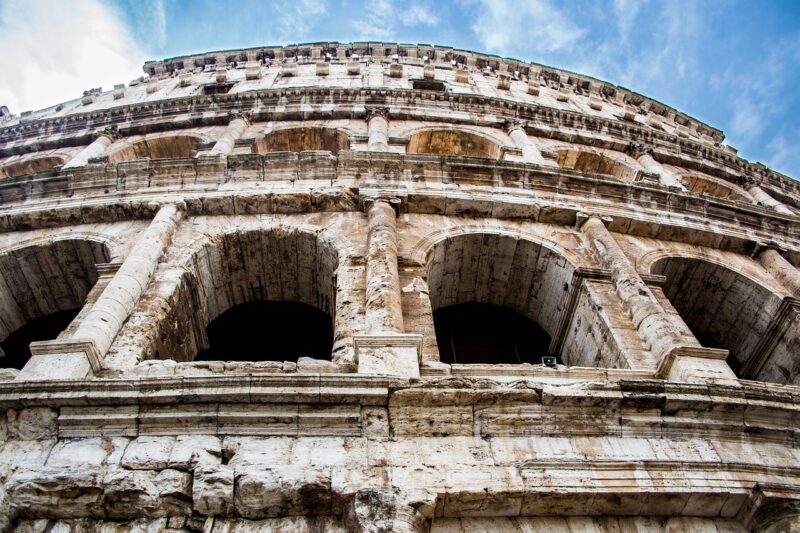The Roman Empire, one of the most influential civilizations in history, has left an indelible mark on the world through its architecture, engineering, and urban planning. Roman ruins, scattered across Europe, North Africa, and the Middle East, offer a fascinating glimpse into the grandeur and complexity of ancient Roman life. From the iconic Colosseum in Rome to the well-preserved city of Pompeii, these remnants of the past continue to captivate historians, archaeologists, and travelers alike.
Geographical Information
Europe
Italy
- Rome: The heart of the Roman Empire, home to the Colosseum, Roman Forum, and Pantheon.
- Pompeii: A city frozen in time by the eruption of Mount Vesuvius in 79 AD.
France
- Nîmes: Known for its well-preserved Roman monuments, including the Arena and the Maison Carrée.
- Arles: Features the Roman Amphitheatre and the Alyscamps, a Roman necropolis.
Spain
- Segovia: Famous for its Roman aqueduct, a marvel of ancient engineering.
- Tarragona: Offers a variety of Roman ruins, including a well-preserved amphitheatre.
North Africa
Tunisia
- Carthage: Once a major rival to Rome, its ruins include the Antonine Baths and the Carthage Museum.
- Dougga: One of the best-preserved Roman towns in North Africa.
Libya
- Leptis Magna: An expansive site with a well-preserved theater, basilica, and market.
Middle East
Jordan
- Jerash: Known as the “Pompeii of the East,” it boasts well-preserved ruins including the Oval Forum and the Temple of Artemis.
Israel
- Caesarea Maritima: Features a Roman theater, aqueduct, and the ruins of Herod’s palace.
Historical Context
Foundation and Expansion
- 753 BC: Traditional date for the founding of Rome.
- 27 BC – 476 AD: Period of the Roman Empire, marked by vast territorial expansion and consolidation.
Decline and Fall
- 5th Century AD: Gradual decline due to internal strife, economic troubles, and invasions by barbarian tribes.
- 476 AD: Fall of the Western Roman Empire.
Key Architectural Styles
Republican Architecture
- Temples: Use of the Etruscan and Greek influences, such as the Temple of Portunus.
- Forum: Central public spaces like the Roman Forum in Rome.
Imperial Architecture
- Amphitheaters: Large arenas like the Colosseum for public spectacles.
- Baths: Elaborate public bathing complexes such as the Baths of Caracalla.
- Aqueducts: Advanced water supply systems, exemplified by the Pont du Gard in France.
Residential Architecture
- Domus: Private homes for the wealthy, featuring atriums and peristyles.
- Insulae: Multi-story apartment buildings for the urban population.
Must-Visit Attractions
The Colosseum, Rome
- History and Construction: Built between 70-80 AD, it could hold up to 80,000 spectators.
- Significance: Used for gladiatorial contests, public spectacles, and political propaganda.
Pompeii
- Preservation: The volcanic ash preserved buildings, artifacts, and even people, providing an unparalleled snapshot of Roman life.
- Highlights: The Forum, the House of the Vettii, and the Amphitheater.
The Roman Forum, Rome
- Historical Significance: The center of political, commercial, and judicial life in ancient Rome.
- Key Structures: The Temple of Saturn, Arch of Septimius Severus, and the Curia.
Hadrian’s Wall, England
- Purpose: Built to protect the northern boundary of the Roman Empire in Britain.
- Features: Forts, milecastles, and turrets along the wall.
The Pantheon, Rome
- Architectural Feat: Known for its massive dome and oculus, it remains one of the best-preserved ancient Roman buildings.
- Use: Originally a temple to all gods, later converted into a Christian church.
Cultural Insights
Roman Religion
- Polytheism: Worship of multiple gods and goddesses, with temples dedicated to deities like Jupiter, Juno, and Minerva.
- Imperial Cult: Worship of the emperor as a god.
Daily Life
- Public Baths: Centers for socializing and relaxation.
- Gladiatorial Games: Popular entertainment in amphitheaters.
Art and Sculpture
- Realism: Emphasis on realistic portrayals of individuals in busts and statues.
- Mosaics: Decorative art form used in public and private buildings.
Activities and Experiences
Guided Tours
- Expert-Led Tours: Offer in-depth insights into the history and significance of Roman ruins.
- Self-Guided Tours: Allow visitors to explore at their own pace with the aid of guidebooks and mobile apps.
Archaeological Sites
- Excavations: Participate in archaeological digs at sites like Pompeii.
- Museums: Visit museums that house artifacts from Roman times, such as the National Archaeological Museum in Naples.
Festivals and Events
- Roman Festivals: Experience reenactments and cultural festivals that bring ancient Rome to life.
- Opera and Theater: Attend performances in ancient theaters, like the one in Orange, France.
Travel Tips
Accommodation
- Historic Hotels: Stay in accommodations that reflect the historic ambiance of the region.
- Modern Amenities: Ensure the convenience of modern facilities while enjoying historical settings.
Transportation
- Public Transport: Use local transport options like buses and trains for ease of travel.
- Car Rentals: Rent a car for greater flexibility in exploring remote sites.
Packing Essentials
- Comfortable Footwear: Essential for exploring large archaeological sites.
- Weather-Appropriate Clothing: Dress according to the season and local climate.
Safety and Health Precautions
General Safety
- Local Regulations: Adhere to local laws and guidelines for tourists.
- Personal Belongings: Keep valuables secure and be aware of pickpockets.
Health Tips
- Hydration: Stay hydrated, especially when visiting outdoor sites in hot climates.
- First Aid Kit: Carry basic medical supplies for minor injuries and ailments.
Budget Planning
Cost-Effective Travel
- Off-Peak Travel: Visit during off-peak seasons to save on accommodation and travel costs.
- Local Cuisine: Opt for local dining options to experience authentic flavors at lower prices.
Tickets and Passes
- Combo Tickets: Purchase combined tickets for multiple sites to save money.
- Discounts: Look for student, senior, or group discounts.
Local Cuisine
Traditional Roman Dishes
- Pasta and Pizza: Staples of Italian cuisine, with regional variations.
- Seafood: Fresh seafood dishes, especially in coastal areas.
Wine and Beverages
- Local Wines: Sample wines from famous regions like Tuscany and Sicily.
- Cafés: Enjoy coffee culture with espresso or cappuccino.
Conclusion
Roman ruins provide a unique window into the past, offering insights into the engineering marvels, architectural splendors, and daily life of an ancient civilization. Whether you’re a history enthusiast, an archaeology buff, or a casual traveler, exploring these remnants of the Roman Empire is a journey through time that promises to be both educational and awe-inspiring. Plan your visit with care, immerse yourself in the local culture, and witness firsthand the enduring legacy of Rome.









